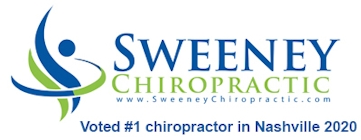 People who do computer work are at risk for a host of problems with pain and disability in their musculoskeletal system. Research about preventing and treating these types of work injuries is ongoing, with the hope of eliminating some of the costs associated with missed work.
People who do computer work are at risk for a host of problems with pain and disability in their musculoskeletal system. Research about preventing and treating these types of work injuries is ongoing, with the hope of eliminating some of the costs associated with missed work.
Myofascial pain syndrome is a chronic condition and one of the main causes of medical consultation and work disability. Workers with the condition suffer intense and deep pain from the skeletal muscles. The syndrome is also characterized by the presence of one or more mysofascial trigger points. These are hyperirritable spots of pain in taut bands of muscles. These trigger points can be classified as either active --with spontaneous pain at rest and during movement and compression-- or latent-- only painful when compressed.
Some former research has shown that latent trigger points may be related to increased widespread pain sensitivity.
In a new study, researchers investigated the effects of different manual techniques applied to latent trigger points. The study involved 117 office workers with pain related to computer work. The techniques were applied to a trigger point of the upper trapezius muscle of participants. Researchers sought to compare the effects on cervical range of motion and pressure pain sensitivity of the different methods.
Participants were randomly assigned to one of five groups. One group received ischemic compression on the trigger points, the second group was treated with passive stretching, and a third group received muscle energy technique. The two control groups were classified either by the use of placebo or were told they would "wait and see".
Throughout the study, the research team measured patients' cervical spine range of motion and determined participants' pressure pain sensitivity. Because they sought short- to medium-term effects, the study followed each patient for just one week of treatment with the selected technique.
The ischemic compression, passive stretching, and muscle energy techniques were all found to be beneficial on both the cervical range of motion as well as the pain threshold. However, the patients treated with ischemic compression had the best outcome. This technique also proved to have the most stable improvement, with the benefits most likely to remain present at the one-week follow-up.
Former research has found that dry needling on trigger points of the trapezius muscle is another effective way to relieve work-related pain among office workers.
Reference
Oliverira-Campelo N, et al. Short- and medium-term effects of manual therapy on cervical active range of motion and pressure pain sensitivity in latent mysofascial pain of the upper trapezius muscle: a randomized controlled trial. Journal of Manipulative and Physiological Therapeutics (published online 13 June 2013). doi: 10.1016/j.jmpt.2013.04.008.
